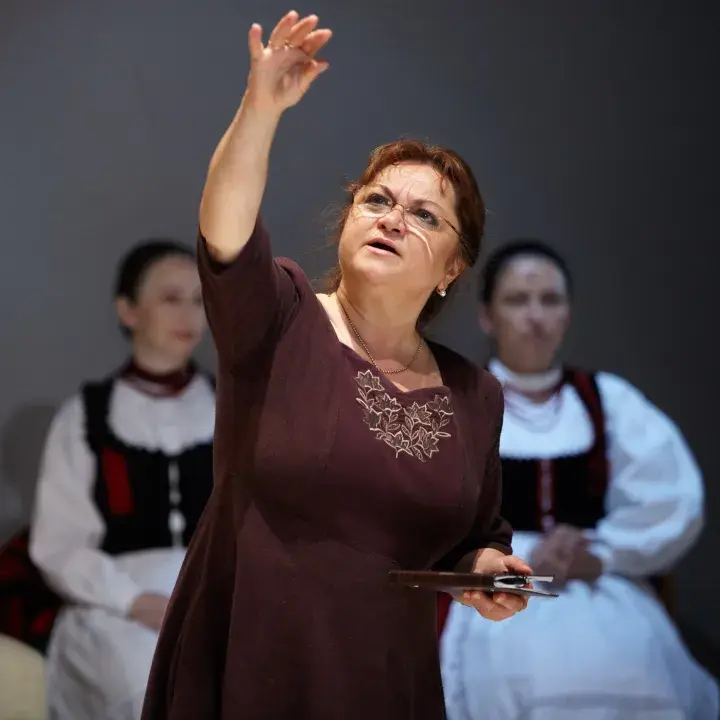In the 1950s, socialist cultural policy actively counted on the "creative collaborators" and "natural talents" who represented the continuation of the folk art and decorative folk art tradition. Their design work fundamentally determined the style of the products made by Home Industry cooperatives.
Both the Council of Applied Folk Arts and Crafts and the cooperatives formed in several regions carried out extensive ethnographic collection work in the realm of folk art. By the 1960s, documents that defined the work of cooperative designers for decades had been created based on the material collected in Mezőkövesd, Heves, Decs, Kalocsa, Kiskunhalas and Siófok. The most complete of these works is the documentation of Mrs Dajaszászy, Vilma Dietz and the folk-weave documentation of Mrs Béla Tompa.
The Hungarian Folk Art Home Industry Cooperative, founded in 1951, worked with the motifs in the weaves and embroideries of five villages: Decs, Őcsény, Alsónyék, Sárpilis and Báta. Also, the beading traditions brought unique enrichment into folk jewellery-making.
The founders of the Heves County Home Industry Cooperative also carried out significant collecting work in their region. The woven towels and pillow edges were collected from Átány, Mátraballa and Mátraderecske, while embroidered tablecloths, tent sheets and epaulette patterns were collected from Recsk and Bodony. The cooperative's women created the Heves folk weave style, still known today, using the pick-up weaving motifs of Átány and the typical striped patterns of the Mátra.
In the seventies, the place of folk craftspeople was largely taken by trained folk artists as leading designers. The plans of the various designers were often realised by several craftspeople, of course, in varying quality.
Youth Folk Art Studio
Besides the Dance House Movement, the Youth Folk Art Studio was launched in the second half of the 1970s. It brought together the talented young artisans of the era and a large number of urban youth into one group.
A significant part of our textile collection consists of clothes made after the Second World War, so the exhibition also features the period of socialist cultural policy. As in the 1930s, in this era. the integration of folk art heritage into the national culture was also important.


